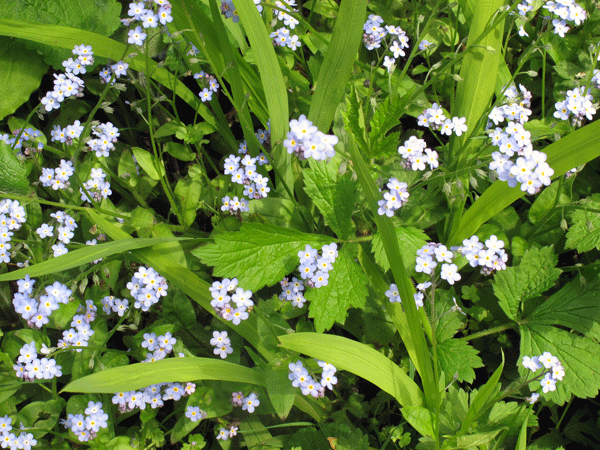So here are some of what I saw this week together with information about where my father saw them.
The primroses are coming to an end. In this valley they grow on the sides of the Cornish hedges (which are built of granite boulders infilled with earth) so they often seem pale compared with the ones in gardens. My father has noted primroses, cowslips and oxlips in Stoke Holy Cross near Norwich in April 1945. I do not think I have ever seen an oxlip and I see that the book says they are confined to Suffolk, Essex, Cambridge and Herts. The book dates from 1935 so I would not be surprised if oxlips no longer exist.
I always associate bluebells with May but they often appear here in April. Maybe I am wrong because my father saw them in Cardington which I see is in Bedfordshire in April. I can remember when it was difficult to find them and we used to make special trips to places with bluebell woods but they have spread everywhere now and these were just in the hedgerow. We even have them self-seeded in our front yard.
This is greater stitchwort. It has a long flowering season these days and is described in the book as common in hedgerows throughout Britain. My father saw that in Swyell in March. I think Swyell is in Northamptonshire which makes sense as I know my father was stationed in Northamptonshire over the winter of 1944-45.
Red campion is another flower with a long flowering season and I notice I have some photos of it taken with foxgloves in July. My father saw it in Norfolk in April and again at Refenberg in the Taurus mountains near Frankfurt am Main in June.
I think the forget-me-not has spread from someone's garden although Skene describes it as a wild flower and my father saw it at Stoke in April. I am not sure about this next one. It may be is a gentian or a member of the forget-me-not family but I find it difficult to identify and it could even be a bugloss although to me that is a hairy plant which flowers later.
I will do a second post about flowers from this walk as some of my photos were not in focus and I need to retake them.
On this occasion, the thing that I really noticed was the sycamores coming into leaf. They self-seed everywhere here and I am constantly having to pull them out of the garden. I don't particularly like fully grown sycamore trees but the new leaves on the tiny plants emerging from the hedgerow have some lovely colours and good shapes and have potential for design work.









No comments:
Post a Comment